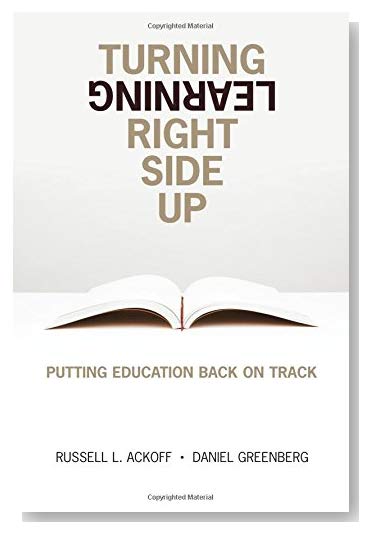 Standard education systems are broken: Turning Learning Right Side Up points towards a way of fixing them. It argues that the current system of education was designed for purposes that no longer make sense. (Ken Robinson’s TED talk Do schools kill creativity? is the classic formulation of this problem.) Then this book talks about how education could be designed to help children become fully-rounded adults.
Standard education systems are broken: Turning Learning Right Side Up points towards a way of fixing them. It argues that the current system of education was designed for purposes that no longer make sense. (Ken Robinson’s TED talk Do schools kill creativity? is the classic formulation of this problem.) Then this book talks about how education could be designed to help children become fully-rounded adults.
The emphasis is on learning rather than teaching, with children taking the initiative in their activities and even in the organisation of the school. This is already the norm at a few places, such as the famous Sudbury Valley School in the USA. It works well partly because a family that sends their child to such a school has probably already prepared them for this more independent style of education. I think it could work more generally, but it must start very early — children will need to grow up understanding that this is how schools work. Places like Playcentre in NZ get them started on the right track, with their philosophy of child-initiated play. We just need to continue this idea as they move through the education system.
This book quotes another book called Child Art by Wilhelm Viola, which itself quotes an art teacher called Franz Cizek. Cizek’s thought has had a great influence on me, especially his thoughts on praise:
You must take the child seriously. He knows at once if you take him seriously or not. But it has no sense — quite apart from the moral side — to simulate.
We should give significance to the child and to the work he creates. This does not mean boundless praise. A lukewarm atmosphere is the right one for a child. Cold, negative criticism is deadly, but extravagant praising is not without danger. In presence of a miracle of beauty in a child’s work one feels sometimes one must shout, “It is marvellous what you have done. That’s as beautiful as van Gogh or Gauguin.” But one uses more modest words. It should be restrained praise, giving the child the feeling that it is quite natural for him to have done such a good picture. Still, if a teacher is rather inclined to take for granted everything good the child does, the danger is greater that he may give too little than too much appreciation.
Paradoxically as it may sound, help as little as possible. The question arises whether the adult should or can help at all. We believe in the indirect method. Sometimes a word will be sufficient, a look, a nod.
And I like this view of parenting styles:
There are three types of parents—first, those who are always fussing after their children, controlling and correcting them and trying to make them walk in the same paths as themselves; then the infinitely preferable variety, who neglect their children altogether; and lastly, the ideal kind, who watch their children from a distance and are ready with encouragement and friendship.
While the ideas in this book have been proven to work in isolated case like the Sudbury Valley School, I think it would be difficult to scale them up to a system that would cater to every child. Difficult, but not impossible… and it would be worth the effort! We would end up with a better education system and from that, a better world.